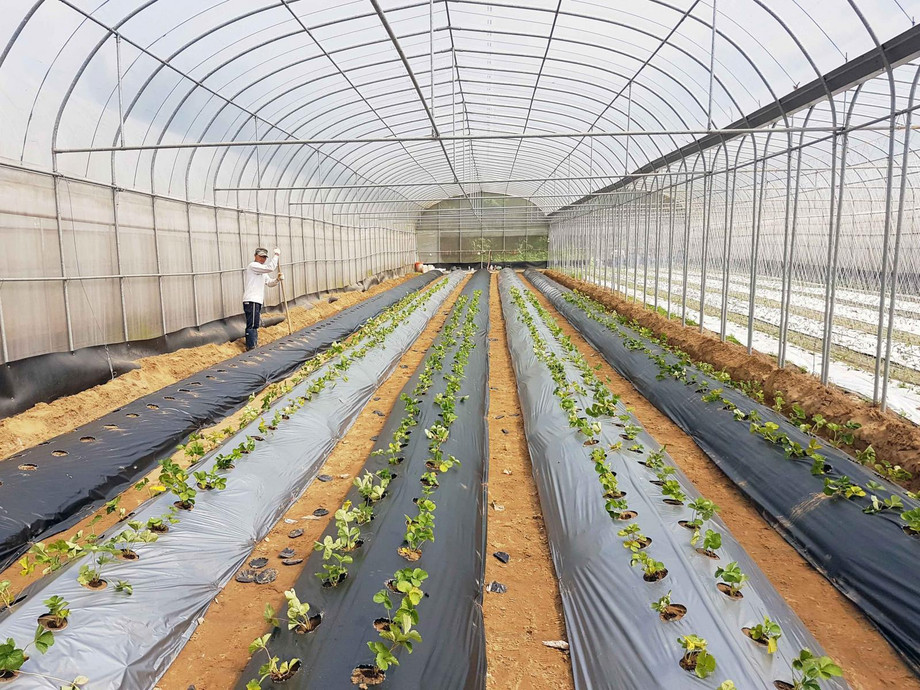The rising demand for effective additives and colorants for plastics in agricultural applications has been fueled by the ongoing development in food production. Agricultural plastic converters need products that improve the durability of plastics and increase crop yield and quality, all while satisfying more severe standards in terms of agriculture's environmental effect, water usage, and material costs. Even in the presence of intense UV radiation and agricultural chemicals, BASF's stabilizers and UV absorbers help extend the lifespan of agricultural applications.
The outbreak of COVID-19 had an influence on the Agricultural film Market. As a result of the epidemic, governments all around the world have ordered a nationwide lockdown to prevent the virus from spreading. The lockdown entails a variety of restrictions on foreign trade, which has resulted in a lack of raw materials in many countries. Furthermore, due to the downturn in agricultural activity, demand for agricultural films decreased, resulting in negative growth for agricultural films in 2020. Industrial activity, on the other hand, gradually increased, and by the end of Q4 2020, the majority of industries were following government recommendations. In 2021 and throughout the forecast period, the market is predicted to increase positively.
Plastic's negative impacts on the environment and human health may stifle market expansion. According to the US National Health and Nutrition Examination Survey, Bisphenol-A, also known as BPA (hazardous chemical), which is used to make billions of plastic beverage containers, dinnerware, protective linings of food cans, and toys, is an endocrine disruptor, which means it can both decrease and increase endocrine activity in humans and cause adverse health effects. Furthermore, if professional labour is hired, the average cost of constructing a greenhouse is roughly US$12,161. As a result, the market's expansion is projected to be hampered by the high cost of greenhouse film installation.
The agriculture films market is dominated by Asia Pacific, which is expected to develop at the quickest rate during the forecast period. This is due to the region's growing population and increased adoption of controlled agriculture (controlled environment agriculture is a technology that maintains optimal growth conditions and provides protection throughout the development of crops). The agricultural films market in the area is predicted to increase in response to strong growth in the agricultural sector and rising food consumption in countries like India. According to the India Brand Equity Foundation, the government of India plans to produce 285.2 million tonnes of food grain in 2019, up from 284.83 million tonnes in 2017.
Explore more about Bulk chemicals- https://bit.ly/367OA9h
LLDPE (Linear Low Density Polyethylene) is predicted to be the leading product type in the agriculture film market during the forecast period. Due to its qualities such as resistance to sunlight and cracking, high tensile strength, and high puncture resistance, LLDPE is becoming more widely used in agricultural films. LLDPE has largely replaced low-density polyethylene (LDPE) in many applications due to its superior performance and reduced manufacturing costs. In the worldwide agricultural films market, the greenhouse film segment is predicted to rise at a high rate. Greenhouse films are long-lasting and protect plants from UV radiation.
By 2030, the world's population is expected to exceed 8.5 billion people. Due to the high population growth in these regions, this would boost food demand, particularly in Eastern Europe, Central Asia, Latin America, and other Asian countries. As the world's population grows, so does the demand for food, putting pressure on agricultural productivity. Controlled agriculture and the introduction of technology such as greenhouses, mulching, and silage can help meet this fast increase in demand for agricultural products. By reducing soil erosion, supplying nutrients, boosting soil temperature, controlling weed development, and other methods, agricultural films aid in enhancing crop quality and increasing agricultural production. As a result, the desire to boost agricultural productivity is a major factor driving demand for agricultural products.

